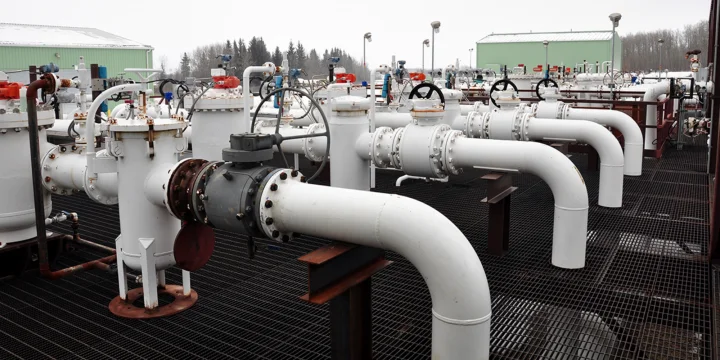
Well Interaction Detection
Challenge
- In oil sands, on adjacent wells, there is potential for materials to move between wells (“well interaction”)
- Goal is to detect and take action on well communication when it is:
- Highly desirable – CO2 Enhanced Oil Recovery (EOR), Steam-Assisted, Gravity Driven (SAGD) in oil sands
- Or undesirable – introducing frack material or stimulant into production wells, or water from poor performing wells to others
- Needed on hundreds of pads, and 1000s of wells
Solution
- Detect: sharp changes in pressure, temperature, conductivity
- Seeq calculation engine used for regression, and signal time offsets
- Using Seeq’s Matlab SDK, systematically search across hundreds of well pairs to find correlations
- Asset structure includes assignment of “neighbor wells”
Benefits
- Identify “offender” wells with undesirable well communication in a SAGD field
- Product quality improvement and reduced processing costs
- Reduce damage SAGD well liners due to steam infiltration
- Energy and material savings (Steam, CO2, chemicals)
- Offset costly consulting services
Data Sources
- Process Data Historian: OSIsoft PI
- Asset Structure: OSIsoft Asset Framework
An AF structure linking “neighbor” wells is developed for systematic detection of relationships between process conditions in wells and their neighbors.
Data Cleansing
- Signals are shifted in time to account for delay and residence time of material migration from “perpetrator” to “victim” wells
Calculations and Capsules
- Relationships between neighbor wells are identified with OLS1 regression analysis of steam injection in “perpetrator” wells and temperature in “victim” wells
- To account for migration delays, signals are shifted in time to identify the true relationship of migration
- Leveraging the Matlab SDK, temperature signals in “victim” wells are systematically shifted 4 hours to 4 days and correlated with steam injection rate of the “perpetrator” wells (Correlation coefficients indicate relevance and rank of importance for review prioritization)
Summarizing Results
- Migration time between “perpetrator” and “victim” wells identified as typically averaging 8 hours, where present
- Well interaction consistently identified when R2 of steam injection/victim well temp (shifted 8 hours) was 0.2 or higher
- Identification of EOR2 material migration can be systematically affiliated with other process occurrences, such as liner degradation or well productivity anomaly data that is overlaid